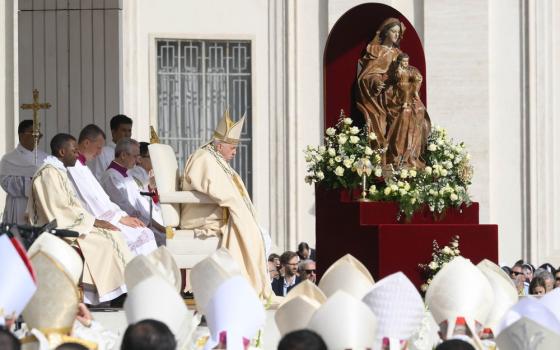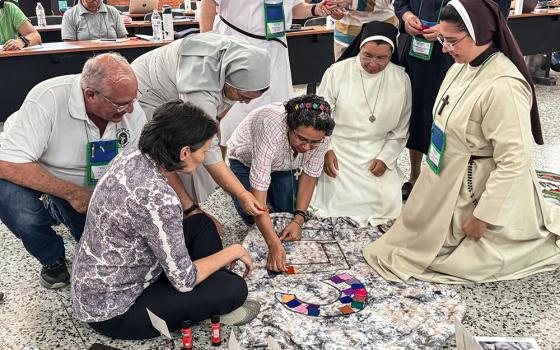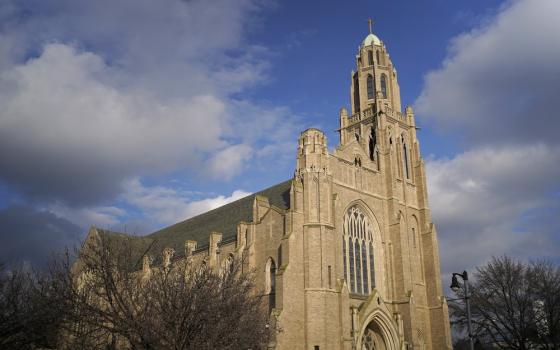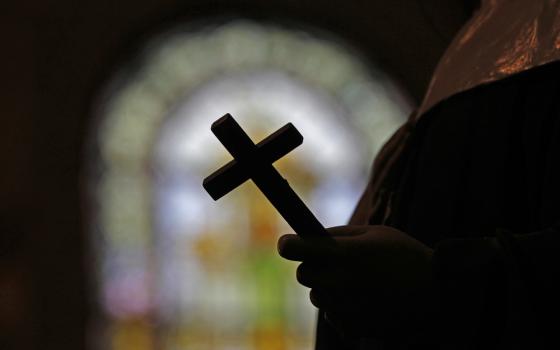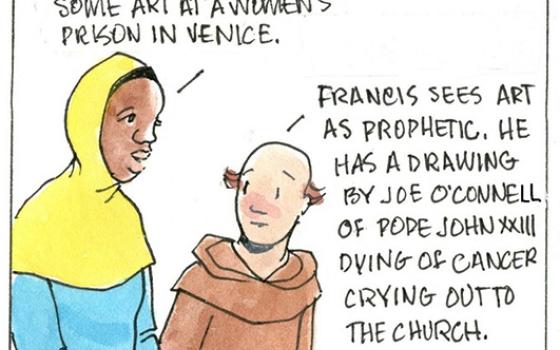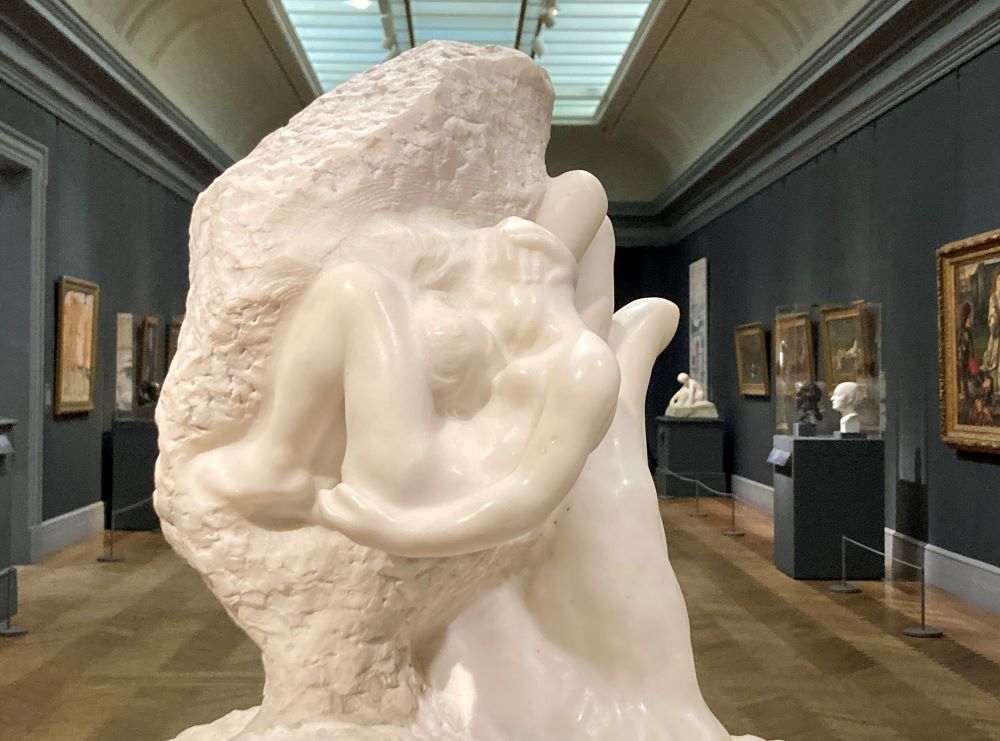
The Hand of God by the French artist Auguste Rodin, carved circa 1907, is on display at the Metropolitan Museum of Art in New York City. (Nancy Sylvester)
The Hand of God is a sculpture by the artist Auguste Rodin. A few years ago, I was given a picture of the marble sculpture during my annual retreat and was quite taken by it. It became an icon for me during those days of prayer. Earlier this year when I was visiting a friend in New York City we went to the Metropolitan Museum of Art. On our way to the exhibit we had come to see, there it was: The Hand of God right in front of me.
Startled, I just stood and took it in once again. The beauty of the work, the curves, the entanglement of the figures, the gentle strength conveyed in the hand and the rough marble awaiting emergence.
The Hand of God comforted me the first time I encountered it, as it still does. I feel Divine Loving Energy encompassing me, holding me within the tangle of relationships. Letting me know I am not alone, ever. The Loving is steadfast and encouraging me to be who I am. The Loving Hand holds and caresses and will never let go as the yet to be carved "I" emerges out of that Divine Loving.
Rodin revered Michelangelo, who often spoke about how when he looked at a block of marble he saw the image — the David or the angel — and simply carved to set it free, revealing what is there already so that other eyes might see as well.
That is what I learned from praying with that sculpture. I am, we all are, like a block of marble held in the energy of Divine Loving as we set free who we are as we see beyond all the rough spots, the selfishness, the negativity restraining us, keeping us locked into who we are not.
Advertisement
Setting free who we are becoming is a good Lenten practice. Begin by reflecting on Jesus' life through this lens of emergence. Jesus began his ministry with 40 days in the wilderness. He created the space to see himself in new ways. Jesus confronted the lure of power, prestige and wealth. He resisted and emerged committed to preach what was in his heart.
His Sermon on the Mount put forth a vision of how to be in this world. It is paradoxical and challenging. Yet it took shape in him as he embodied the Beatitudes. The Last Supper Discourse in the Gospel of John brings a fulfillment to how he saw himself.
I am the Way, the Truth and the Life (John 14:6). … Believe me that I am in God and God is in me, or else believe because of the works I do. The truth of the matter is anyone who has faith in me will do the works I do and greater works besides. … On that day you’ll know that I am in God, and you are in me, and I am in you. … As my Abba has loved me, so have I loved you. Live on in my love. … This is my commandment: love one another as I have loved you. There is no greater love than to lay down one’s life for one's friends.
Yet there was still a bit more to be chipped away. Jesus' final moment on the cross set him free. Jesus completed his sculpture by surrendering to Love and in Love emerging forever in the Hand of God.
Look now to your own emerging sculpture. Try to see what is keeping you from becoming your true self. Chip away at the temptations in your life; the addictions that make you less than you are. Polish and make smooth the values and beliefs that hold you and give you meaning. Embody them until they shine so that others can see "you" becoming whole. Carve the marble deeply to touch into the life deep within: the life you share with Jesus and our Abba God. Stand, feel yourself emerging, then fall back and know you are held in the Hand of God.
Rodin is inviting us to learn how to see — see within and without. See what sometimes looks impossible. He invites us to see with a contemplative heart. We have begun the carving, and we must continue throughout our lives — becoming our best selves regardless of the cost.

